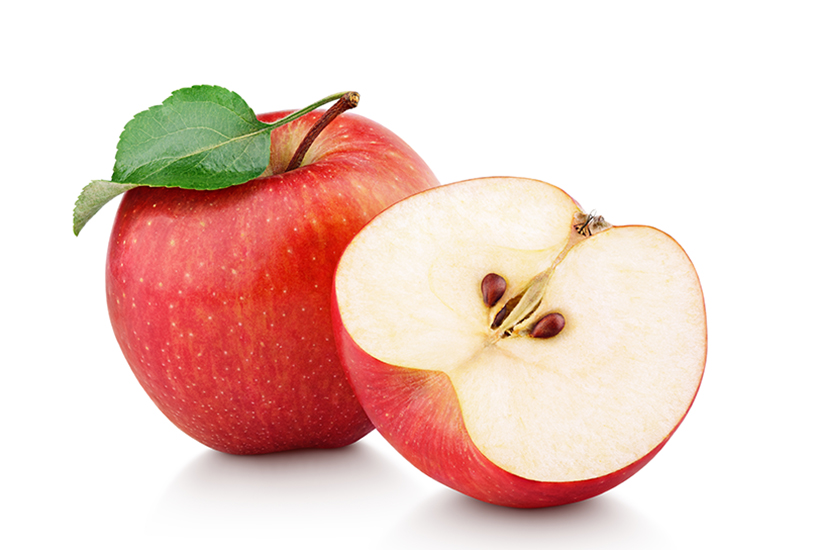Enzymes in Action - Pectinase

AUSTRALIAN CURRICULUM ALIGNMENT:
-
Biochemical processes in the cell are controlled by the nature and arrangement of internal membranes, the presence of specific enzymes, and environmental factors (ACSBL050)
- Enzymes have specific functions, which can be affected by factors including temperature, pH, the presence of inhibitors, and the concentrations of reactants and products (ACSBL051)
BACKGROUND:
Pectin is a structural polysaccharide molecule in the cell wall of plants. It helps bind cells together as part of the middle lamella (meaning layer); and as part of the cell wall it helps the plant to grow. As a plant matures, the enzyme Pectinase breaks down the Pectin, causing fruit to soften. Pectinase is used commercially to hasten the breakdown of fruits in order to extract more juice with more efficiency, reducing cost and waste.
This practical provides students with an insight into the world of commercial food manufacturing; however, it is important to remind students that the juice extracted in this experiment is not for consumption, as appropriate food-handling procedures are not followed. In this practical, students are challenged with extracting as much juice as possible from an apple to understand the ways in which enzymes can catalyse biochemical processes. The results will reveal that the addition of Pectinase increases the yield of juice. Variations may be introduced; such as, temperature or pH (see extension exercise below) to allow students the opportunity to deduce the ideal conditions for this enzyme. Students may work individually or in pairs.
PREPARATION- BY LAB TECHNICIAN:
- Cut the apples into small pieces of roughly 5mm cubes, allowing approximately 100g per group.
- Dilute Pectinase to 50% by adding distilled water to an equal amount of enzyme
METHOD- STUDENT ACTIVITY:
- Set up two beakers, label one ‘E’ for ‘experiment’ and the other label ‘C’ for ‘control’.
- Divide your apple pieces as evenly as possible, so that each beaker will have approximately 50g.
- Add 2mL of diluted Pectinase to the apple in the ‘experiment’ beaker
- Add 2mL of water to the apple in the ‘control’ beaker.
- Stir the contents. Be careful to keep the stirring rod of each batch separate from the other to avoid introducing the enzyme to the ‘control’ beaker.
- Cover with Parafilm and incubate at 40°C for 15 minutes.
- During this time, set up your measuring cylinders. Place a funnel lined with filter paper in each cylinder and label them respectively to match your beakers.
- After incubation, pour your apple mixture into the appropriate funnel.
- At five-minute intervals, record the volume of juice extracted from each batch.
- Graph your results.
OBSERVATION AND RESULTS
The ‘experiment’ beaker yields substantially more juice than the ‘control’ beaker.
INVESTIGATION
- Ask students why distilled water is added to the ‘control’. Students should understand that the intention is to mimic the same conditions in the ‘control’ as much as possible; to minimise the number of variables. In this case, the 2mL of water accounts for the extra 2mL of enzyme fluid that is added to the ‘experiment’ beaker, invalidating any hypotheses that the extra fluid caused by the larger volume of yield.
- Discuss the catalytic nature of enzymes. Explain that they are proteins, which facilitate reactions without being themselves consumed in the reaction. In theory, a single molecule of an enzyme should be able to catalyse an unlimited number of reactions given enough time.
EXTENSION EXERCISE
For a deeper understanding of enzymes, you may like to observe the behavioural changes caused by changes in temperature and/or pH. The sample at a warm temperature and low pH should have the highest yield. To test this, split the class into groups and task each group with one variation and then compile the class results. Alternatively, you may prefer to have each group test all possible variations. Remember to run a control with all variables for comparison. Possible variation tests include:
- Running the experiment at 40°C, at room temperature and on ice.
- Changing the pH of the enzyme by adding HCl or NaOH.
- Trying a combination – high temperature with low pH, high temperature with high pH, low temperature with low pH, low temperature with high pH.
- Comparing the yield of different varieties of apple.
 Time Requirements
Time Requirements
- 45 mins
 Material List
Material List
-
Apple 100g
- Pectinase, 1mL
- 2 Spoons/ glass stirring rods
- 2 Beakers
- Parafilm
- 2 Filter Funnels
- 2 Filter Papers
- 2 Measuring Cylinders 100mL
- Water bath or incubator
- Stopwatch
 Safety Requirements
Safety Requirements
- Follow this practical, only in accordance with established laboratory safety practices.
- Wear appropriate personal protective equipment (PPE).
- Wipe any spillage with water. Do not allow the enzyme to dry out and create a dust.
- Know and follow all regulatory guidelines for the disposal of laboratory wastes.
- Be aware of any food allergies or sensitivities to chemicals.
- Under no circumstances are the materials in this prac to be consumed as food.
